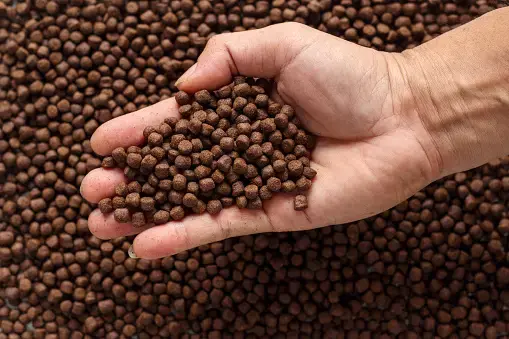Unveiling the Secrets of Murrel Farming: A Profitable Endeavor in Karnataka's Aquaculture
- contact017599
- Aug 7
- 3 min read
Updated: Aug 10

Are you looking for a lucrative venture in aquaculture? Murrel, or snakehead fish, may be the answer. This freshwater fish has captured the interest of many aspiring entrepreneurs in Karnataka. Not only is it a delicacy in Indian cuisine, but it also offers a profitable opportunity for those willing to explore murrel farming. In this post, we will delve into what makes murrel farming appealing, its benefits, and effective practices that can lead to success.
Understanding Murrel Fish
Murrel fish belong to the Channidae family and have a unique appearance with elongated bodies and sharp teeth. They thrive in rivers, ponds, and lakes across Asia. Known for their exceptional taste and high nutritional value, murrel fish is packed with omega-3 fatty acids, making it popular among health-conscious consumers.
What makes murrel particularly suitable for farming is its ability to adapt to diverse water conditions. According to studies, murrel fish can survive in various environments with temperatures ranging from 18°C to 30°C, giving farmers flexibility in their operations.
The Growing Demand for Murrel
Murrel fish is experiencing a surge in popularity, especially in Karnataka, where demand has increased by approximately 20% over the last few years. This is largely due to its inclusion in traditional dishes and its reputation for being a healthy source of protein, rich in vitamins and minerals.
Urbanization is also influencing dietary habits, as more consumers seek fresh, local products. In a recent survey, nearly 70% of participants reported a preference for locally sourced seafood. For murrel farmers, this shifting trend creates a significant growth opportunity.
Setting Up a Murrel Farm
Choosing the Right Location
Selecting the right spot is crucial for successful murrel farming. Look for locations with clean water sources like rivers, lakes, or existing ponds. Testing water quality for pH, dissolved oxygen, and ammonia levels is essential. Ideally, the pH level should be between 6.5 and 8.5 for optimal fish growth.
Designing the Farm
After pinpointing the location, focus on designing the farm layout. You can use earthen ponds, concrete tanks, or cage systems, depending on your resources and goals. For example:
Earthen Ponds: These are cost-effective and provide a natural habitat, but they require careful management.
Concrete Tanks: These allow for precise control over water conditions and make monitoring easier.
Choosing the right system can significantly impact your farm's productivity and sustainability.
Sourcing Fingerlings
Healthy fingerlings are a cornerstone of a successful murrel farm. Purchase them from reputable hatcheries known for quality breeding practices. Healthy fingerlings have a survival rate that can reach over 90%, compared to potentially 60% from less reputable sources, setting you up for better yields down the line.
Best Practices for Murrel Farming
Feeding and Nutrition
The diet of murrel fish is crucial for their growth. Being carnivorous, they need high-protein feed. Optimal diets include commercial fish feed or live feed such as earthworms, small fish, and insects. Setting a regular feeding schedule can enhance growth rates and health. Avoid overfeeding, as it can lead to water quality issues and increased operational costs.
Water Management
Maintaining optimal water quality is essential. Monitor parameters such as temperature, pH, and dissolved oxygen regularly. An effective management practice includes:
Water Filtration Systems: These improve water quality significantly, ensuring a healthier environment for the fish.
Aeration: This can enhance dissolved oxygen levels, promoting healthy growth.
Changing a portion of the water weekly helps reduce harmful substances and prevents disease outbreaks.
Disease Management
Diseases can pose serious threats in aquaculture. Implement biosecurity measures, including maintaining cleanliness, quarantining new stock, and regularly monitoring fish health. If a disease is detected, swift action is critical. This may involve medications or adjusting environmental conditions to mitigate risks.
Marketing Your Murrel Fish
Once your murrel fish are ready for harvest, marketing them effectively is key to maximizing profits. Build connections with local fish markets, restaurants, and consumers to secure steady demand. Participating in local food fairs and farmers' markets can boost visibility and foster brand loyalty. Emphasizing the freshness and quality of your fish can help you stand out among competitors.
Harvesting Success in Murrel Farming
Murrel farming offers a bright prospect for those in Karnataka's aquaculture sector. By equipping yourself with knowledge and best practices, you can meet the growing demand for this nutritional fish. Focusing on sustainable methods and effective marketing strategies can turn murrel farming into a rewarding venture that boosts local economies and enhances food security.
As the aquaculture landscape evolves, staying informed on industry trends and best practices will be vital. Embracing sustainable, innovative approaches not only benefits you as a farmer but also supports the broader community in Karnataka.
.png)


Comments